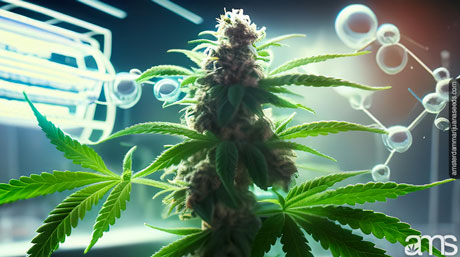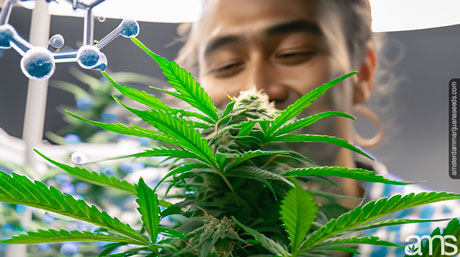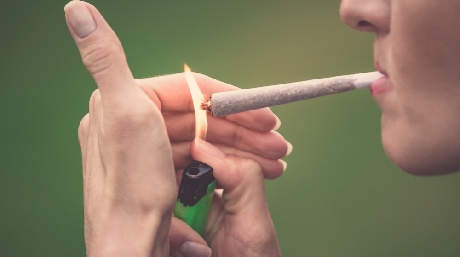In this article you will find answers to the following questions: What is the relationship between CO2 and plant growth?, How does carbon dioxide supplementation affect plant development?, What are some methods used for CO2 enrichment in plant cultivation?, How does higher CO2 levels contribute to increased yields?, What is the impact of CO2 on accelerated growth in plants?, How does CO2 affect plant yield?, What are some effective methods for CO2 supplementation?, What role does carbon dioxide play in the growth of plants?, How does CO2 influence plant growth?, What techniques can be employed to enhance plant yield?
Understanding CO2 Supplementation: A Key Ingredient for Plant Growth
In our ever-evolving world of plant cultivation, a thriving topic of discussion has been “How does carbon dioxide (CO2) supplementation contribute to accelerated plant growth and higher yields, and what methods can be employed?” Let’s embark on a journey of discovery, where we will delve into the fascinating world of CO2 enrichment and its effects on plant growth.
One of the most exciting aspects of growing marijuana, or any plant for that matter, is the understanding that you, as a grower, have the ability to control and manipulate the environment to achieve the highest possible yield. It’s not unlike baking; the quality of the ingredients, the temperature, and the process all influence the final outcome. For those of you looking to buy cannabis seeds , you know that the type of seed can affect the plant’s growth and yield significantly.
Now, speaking of ingredients, what’s a key ingredient that we might overlook in our cannabis growing ventures? It’s CO2. Yes, that’s right, carbon dioxide! But why is it so vital to the health and yield of our beloved plants?
CO2, a naturally occurring gas, is essential for the process of photosynthesis. This process is how plants convert light energy, typically from the sun, into chemical energy, or sugars, to fuel their growth. Plants take in CO2 from their environment and, with the help of sunlight and water, convert it into oxygen and glucose. Hence, Carbon dioxide supplementation becomes a game-changer in indoor growing scenarios, especially in enclosed environments where natural CO2 may be scarce.
It’s here that CO2 enrichment methods come into play. These methods can significantly impact the speed of your plants’ growth, resulting in CO2 accelerated growth. So, if you’re an enthusiast grower and want to see your plants flourish, it’s worth exploring these techniques.
But how exactly does CO2 supplementation lead to higher yields CO2 wise? When you increase the concentration of CO2 in the plant’s environment, you essentially speed up the rate of photosynthesis. This increased rate means the plant is producing more glucose and thus has more energy to grow faster and larger. Think of it as giving your plants an energy drink – they get a rapid boost, leading to accelerated growth and higher yields.
One of the first things you’ll want to know when considering CO2 supplementation methods is how to measure the amount of CO2 in your growing environment. It’s essential to know your starting point to adjust accurately and ensure the levels are appropriate for your plants. There are several ways to do this, but a common method is to use a CO2 monitor. These are readily available online and will give you a good indication of your current levels.

Now, when you’re ready to start supplementing your environment, there are several ways to go about it. The first, and most straightforward, is using a CO2 generator. These machines are designed to produce and release CO2 into your growing environment. Another method involves CO2 bags or buckets. These containers have a substrate inside (usually a type of grain) that is colonized by mycelium. The mycelium respires, releasing CO2 that your plants can use. Alternatively, you can use a CO2 tank and regulator to release controlled amounts of gas into your grow room.
One thing to remember is that your plants need to be at a certain stage of growth to benefit from increased CO2 levels. Younger plants don’t need as much CO2 and won’t benefit significantly from enrichment. However, once your plants enter their flowering stage, that’s when the magic happens.
This takes us to the question, what should be the optimum CO2 level?
Mastering CO2 Enrichment: A Game Changer in Enhancing Cannabis Yield
The optimal CO2 level for maximum plant growth is around 1200 to 1500 parts per million (ppm). This is significantly higher than the average ambient CO2 level, which usually sits around 400 ppm. When CO2 levels are optimized, it is not uncommon to witness an impressive 20-30% increase in yield. So, if you’re growing marijuana and aiming for the highest possible yield, then CO2 supplementation is definitely something to consider.
However, enhancing plant yield is not just about cranking up the CO2 levels. It’s crucial to remember that CO2 supplementation is only one part of the puzzle. It’s one ingredient in the recipe, and it needs to be balanced with the others. Think about it this way: if you were baking a cake and you doubled the amount of sugar, but didn’t adjust the other ingredients, you’d end up with a mess. It’s the same with plant growth.
To take advantage of CO2 enrichment, you need to balance it with your light and temperature levels. Plants use CO2 during photosynthesis, which is driven by light. Therefore, if you increase your CO2 levels but don’t increase your light levels, your plants won’t be able to utilize the extra CO2. Similarly, higher temperatures can often support higher rates of photosynthesis, so increasing your grow room’s temperature can often lead to greater growth and yields.
One of the most exciting things about carbon dioxide plants is that they are so responsive to their environment. By learning about these processes and how they’re interconnected, we can take a scientific approach to our cannabis growing and achieve fantastic results.
Whether you’re a seasoned grower or someone who’s about to buy marijuana seeds for the first time, understanding these fundamentals will help you significantly.
Now, let’s address another significant aspect: the safety of CO2 supplementation. Yes, while CO2 plant growth has numerous advantages, one should also be aware of the potential risks. If the CO2 concentration gets too high, it can be detrimental not only to your plants but also to you. Therefore, always monitor the levels and ensure proper ventilation in your growing area.
Remember, cultivating cannabis or any plant isn’t just about the end result; it’s about the journey, too. It’s about learning, experimenting, and sometimes making mistakes. Each step, each decision we make, takes us closer to our goal of perfecting the art of cultivation.

And what a journey it is! It starts when you buy cannabis seeds, those small, unassuming objects brimming with potential. You nurture them, help them grow, using methods like carbon dioxide supplementation and controlling the light, temperature, and moisture. The journey continues as you watch your cannabis seeds sprout, grow, and flourish under your care. The sense of fulfillment that comes from growing your own plants, whether for medicinal purposes, recreational use, or simply the love of gardening, is a unique and gratifying experience.
As growers, we must always remember that the world of cannabis growing is ever-evolving. There’s always more to learn, new techniques to try, and innovations to adopt. Embracing the wonders of CO2 accelerated growth and mastering CO2 supplementation methods are just some of the ways to enhance your skills as a cultivator.
In the end, the magic happens when the seed, the light, the water, the CO2, and your nurturing all come together in harmony. It’s this remarkable journey from cannabis seeds to a thriving plant that truly encapsulates the beauty of growth.
I hope you enjoyed this deep dive into the world of CO2 supplementation in plant growth, and the insights shared here will enhance your next growing experience. Remember, the art of cultivation is a continuous learning process – so keep growing, keep learning, and keep creating magic!
FREQUENTLY ASKED QUESTIONS:
1. How does carbon dioxide (CO2) influence plant growth?
- Carbon dioxide (CO2) is essential for photosynthesis, the process through which plants convert light energy into chemical energy to fuel their growth. Higher levels of CO2 increase the rate of photosynthesis, leading to faster growth and larger plants.
2. What are some methods for CO2 enrichment in plant cultivation?
- Common methods for CO2 enrichment include using CO2 generators, CO2 bags or buckets that release CO2 through microbial activity, and CO2 tanks with regulators that allow for controlled gas release into the grow environment.
3. How do higher CO2 levels contribute to increased yields in plants?
- By increasing CO2 levels in the growing environment, plants can produce more glucose during photosynthesis, providing them with more energy. This results in accelerated growth and significantly higher yields, often increasing by 20-30% when CO2 levels are optimized.






